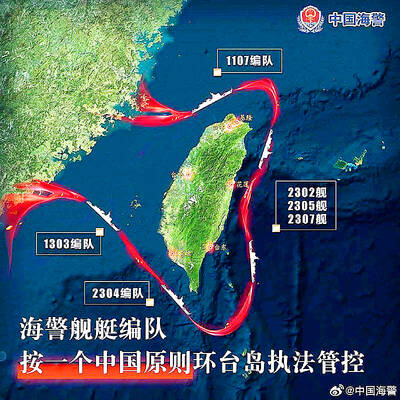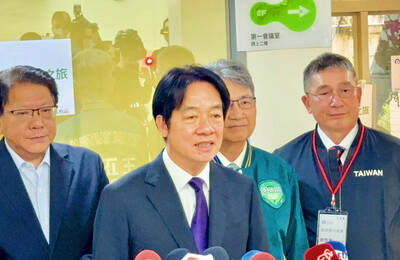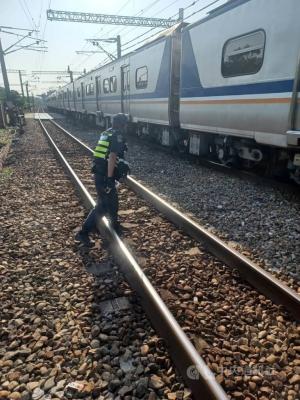The parents of a baby in Nauru named their child “Taiwan” recently to express their gratitude to the healthcare assistance the country has extended to the Nauruan people, the International Cooperation and Development Fund (ICDF) said yesterday.
Born with a respiratory ailment at Nauru’s National Hospital, the baby boy was saved by a Taiwanese mobile medical team that was in the country on an 11-day medical service mission, the ICDF said.
The baby was found at birth to be suffering from Meconium Aspiration Syndrome, a respiratory ailment caused by the overdue pregnancy of the mother, an ICDF official said.
With the baby in clear distress and taking 70 to 80 breaths per minute, visiting Taiwanese doctors from the Taichung Veterans General Hospital and the Show Chwan Health Care System operated on the infant and saved its life, the official said.
The team’s mission in the Pacific island country from Nov. 2 to last Wednesday was organized by the ICDF, which is affiliated with the Ministry of Foreign Affairs and coordinates mobile medical teams to provide free medical services in foreign countries as an extension of the country’s diplomacy.
Meanwhile, the ICDF said another Taiwanese mobile medical team was set to depart for Haiti yesterday, marking the first time an ICDF-organized team would travel to the country to provide medical services.

Taiwan would benefit from more integrated military strategies and deployments if the US and its allies treat the East China Sea, the Taiwan Strait and the South China Sea as a “single theater of operations,” a Taiwanese military expert said yesterday. Shen Ming-shih (沈明室), a researcher at the Institute for National Defense and Security Research, said he made the assessment after two Japanese military experts warned of emerging threats from China based on a drill conducted this month by the Chinese People’s Liberation Army’s (PLA) Eastern Theater Command. Japan Institute for National Fundamentals researcher Maki Nakagawa said the drill differed from the

‘WORSE THAN COMMUNISTS’: President William Lai has cracked down on his political enemies and has attempted to exterminate all opposition forces, the chairman said The legislature would motion for a presidential recall after May 20, Chinese Nationalist Party (KMT) Chairman Eric Chu (朱立倫) said yesterday at a protest themed “against green communists and dictatorship” in Taipei. Taiwan is supposed to be a peaceful homeland where people are united, but President William Lai (賴清德) has been polarizing and tearing apart society since his inauguration, Chu said. Lai must show his commitment to his job, otherwise a referendum could be initiated to recall him, he said. Democracy means the rule of the people, not the rule of the Democratic Progressive Party (DPP), but Lai has failed to fulfill his

A rally held by opposition parties yesterday demonstrates that Taiwan is a democratic country, President William Lai (賴清德) said yesterday, adding that if opposition parties really want to fight dictatorship, they should fight it on Tiananmen Square in Beijing. The Chinese Nationalist Party (KMT) held a protest with the theme “against green communists and dictatorship,” and was joined by the Taiwan People’s Party. Lai said the opposition parties are against what they called the “green communists,” but do not fight against the “Chinese communists,” adding that if they really want to fight dictatorship, they should go to the right place and face

A 79-year-old woman died today after being struck by a train at a level crossing in Taoyuan, police said. The woman, identified by her surname Wang (王), crossed the tracks even though the barriers were down in Jhongli District’s (中壢) Neili (內壢) area, the Taoyuan Branch of the Railway Police Bureau said. Surveillance footage showed that the railway barriers were lowered when Wang entered the crossing, but why she ventured onto the track remains under investigation, the police said. Police said they received a report of an incident at 6:41am involving local train No. 2133 that was heading from Keelung to Chiayi City. Investigators